The automotive landscape is ever-evolving, and the competition between SUVs is fierce. In this article, we will explore an exciting face-off between two impressive contenders: the Kia Sportage and the Nissan X-Trail. With innovative technologies, efficient performance, and striking designs, both vehicles promise to attract discerning drivers. Let's delve into their specifications and innovations to determine which SUV reigns supreme.
Kia Sportage vs Nissan X-Trail – Which car suits you better?
Two cars, one duel: Kia Sportage meets Nissan X-Trail.
Which one wins in performance, efficiency and value for money? Find out now!
Design and Dimensions
The Kia Sportage flaunts a modern exterior defined by its bold lines and distinctive signature grille. Measuring 4,515 mm in length, 1,865 mm in width, and 1,650 mm in height, it provides a robust yet refined aesthetic. Meanwhile, the Nissan X-Trail stretches to a length of 4,680 mm, a width of 1,840 mm, and stands slightly taller at 1,720 mm, embodying a more rugged persona.
Powertrains and Performance
Under the hood, the Kia Sportage offers a versatile range of engines, including Diesel MHEV, Petrol MHEV, Full Hybrid, Petrol, and Plugin Hybrid options, with power outputs varying from 136 HP to a thrilling 252 HP. This dynamic lineup is paired with both manual and automatic transmissions, allowing drivers a choice between 4WD and FWD configurations.
On the flip side, the Nissan X-Trail provides a more streamlined engine range, focusing on Petrol MHEV and Full Hybrid technology, with power outputs from 163 HP to 213 HP. Its automatic transmission allows for seamless gear changes, ensuring a smooth driving experience. Both SUVs have competitive acceleration times, with the Sportage achieving 0-100 km/h in as little as 8.3 seconds, whereas the X-Trail impressively hits similar benchmarks from 7 seconds upwards.
Efficiency and Driving Range
Fuel efficiency is a pivotal consideration for many buyers, and both SUVs deliver commendable figures. The Kia Sportage showcases an impressive range with consumption figures as low as 5 L/100km, with some hybrid models offering extraordinary electric ranges of up to 64 km. The Nissan X-Trail also holds its ground with consumption rates ranging from 5.7 to 6.9 L/100km, making it an efficient choice for those looking to reduce fuel costs.
Interior Comfort and Technology
Inside the Sportage, comfort meets technology with a spacious cabin for five passengers and ample trunk space ranging from 526 to 587 liters, depending on the configuration. Technological features include a user-friendly infotainment system, driver assistance technology, and various premium finishes that elevate the driving experience.
The Nissan X-Trail shines with its adaptable interior, available in both five and seven-seat configurations, with trunk capacities peaking at 585 liters. It boasts an intuitive infotainment system that supports connectivity options for modern users, alongside advanced safety features to ensure peace of mind on every journey.
Safety Features
Safety is a major priority for both brands. The Kia Sportage incorporates various driver assistance technologies such as collision avoidance systems, lane-keeping assist, and adaptive cruise control. Similarly, the Nissan X-Trail offers comprehensive safety packages, including ProPILOT Assist technology, which enhances driving confidence with semi-autonomous capabilities.
Final Thoughts
In conclusion, the choice between the Kia Sportage and the Nissan X-Trail ultimately boils down to individual preferences and priorities. The Sportage provides an innovative powertrain lineup with stellar performance and efficiency, whereas the X-Trail impresses with spaciousness and rugged reliability. Both SUVs embody modern technology and style, ensuring that either choice will satisfy the needs of today’s discerning SUV buyers.
Here’s where it gets real: The technical differences in detail
Costs and Efficiency:
Looking at overall running costs, both models reveal some interesting differences in everyday economy.
Kia Sportage has a a bit advantage in terms of price – it starts at 29700 £, while the Nissan X-Trail costs 34000 £. That’s a price difference of around 4294 £.
Fuel consumption also shows a difference: Kia Sportage manages with 1.20 L and is therefore decisively more efficient than the Nissan X-Trail with 5.70 L. The difference is about 4.50 L per 100 km.
Engine and Performance:
Power, torque and acceleration say a lot about how a car feels on the road. This is where you see which model delivers more driving dynamics.
When it comes to engine power, the Kia Sportage has a slightly edge – offering 252 HP compared to 213 HP. That’s roughly 39 HP more horsepower.
In acceleration from 0 to 100 km/h, the Nissan X-Trail is slightly quicker – completing the sprint in 7 s, while the Kia Sportage takes 7.90 s. That’s about 0.90 s faster.
In terms of top speed, the Kia Sportage performs hardly perceptible better – reaching 203 km/h, while the Nissan X-Trail tops out at 200 km/h. The difference is around 3 km/h.
There’s also a difference in torque: Nissan X-Trail pulls evident stronger with 525 Nm compared to 350 Nm. That’s about 175 Nm difference.
Space and Everyday Use:
Cabin size, boot volume and payload all play a role in everyday practicality. Here, comfort and flexibility make the difference.
Seats: Nissan X-Trail offers noticeable more seating capacity – 7 vs 5.
In curb weight, Kia Sportage is slight lighter – 1526 kg compared to 1668 kg. The difference is around 142 kg.
In terms of boot space, the Kia Sportage offers barely noticeable more room – 587 L compared to 585 L. That’s a difference of about 2 L.
In maximum load capacity, the Kia Sportage performs slightly better – up to 1776 L, which is about 352 L more than the Nissan X-Trail.
When it comes to payload, Kia Sportage slight takes the win – 580 kg compared to 574 kg. That’s a difference of about 6 kg.
Who comes out on top?
Overall, the Kia Sportage shows itself to be leaves the rival little chance and secures the title of DriveDuel Champion.
It convinces with the more balanced overall package and proves to be the more versatile choice for everyday use.
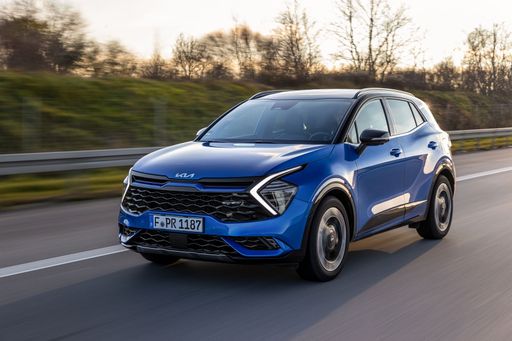 @ Kia Corporation
@ Kia Corporation
Kia Sportage
Kia Sportage
The Kia Sportage proves you don't have to choose between style and sensible family motoring, wrapping modern, confident looks around a roomy, well-equipped cabin. It's an easy car to live with — comfortable on daily runs, pleasantly engaging when you want a bit of fun, and kind to your wallet so you can keep smiling at the fuel pump.
details @ Kia Corporation
@ Kia Corporation
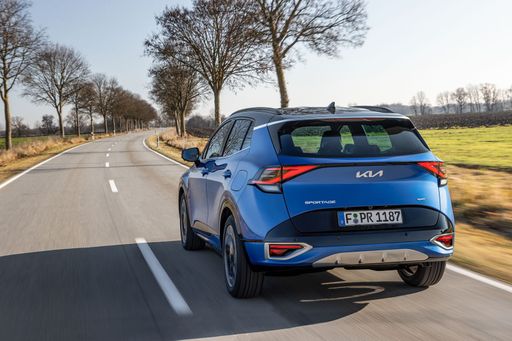 @ Kia Corporation
@ Kia Corporation
 @ Kia Corporation
@ Kia Corporation
 @ Kia Corporation
@ Kia Corporation
Nissan X-Trail
The Nissan X-Trail stands out with its spacious interior and practical design, making it an ideal choice for families and adventure enthusiasts alike. Its sleek exterior styling is complemented by modern technology features that enhance both driving pleasure and safety. This versatile SUV offers a comfortable ride, whether navigating city streets or exploring off-road paths, ensuring you travel in style and comfort.
details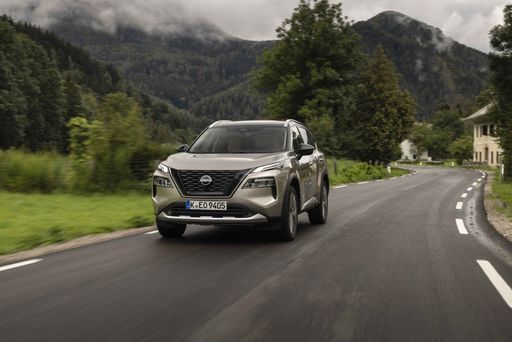 @ Nissan Motor Corporation
@ Nissan Motor Corporation
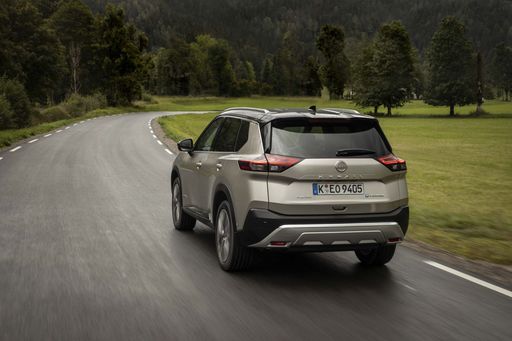 @ Nissan Motor Corporation
@ Nissan Motor Corporation
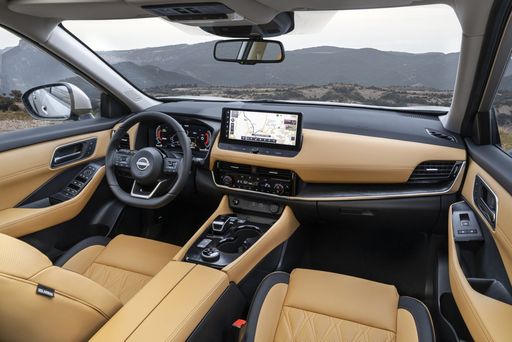 @ Nissan Motor Corporation
@ Nissan Motor Corporation
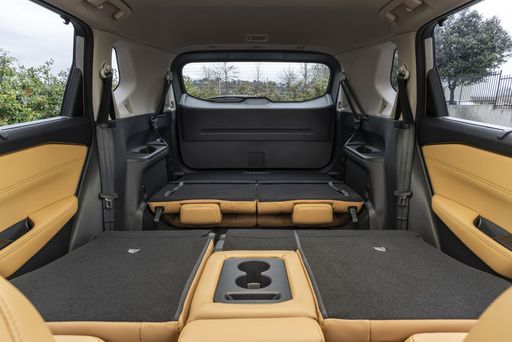 @ Nissan Motor Corporation
@ Nissan Motor Corporation
 @ Kia Corporation
@ Kia Corporation
|
 @ Nissan Motor Corporation
@ Nissan Motor Corporation
|
|
|
|
Costs and Consumption |
|
|---|---|
|
Price
29700 - 44700 £
|
Price
34000 - 50400 £
|
|
Consumption L/100km
1.2 - 7.9 L
|
Consumption L/100km
5.7 - 6.9 L
|
|
Consumption kWh/100km
-
|
Consumption kWh/100km
-
|
|
Electric Range
64 km
|
Electric Range
-
|
|
Battery Capacity
-
|
Battery Capacity
-
|
|
co2
28 - 180 g/km
|
co2
131 - 161 g/km
|
|
Fuel tank capacity
42 - 54 L
|
Fuel tank capacity
55 L
|
Dimensions and Body |
|
|---|---|
|
Body Type
SUV
|
Body Type
SUV
|
|
Seats
5
|
Seats
5 - 7
|
|
Doors
5
|
Doors
5
|
|
Curb weight
1526 - 1905 kg
|
Curb weight
1668 - 1961 kg
|
|
Trunk capacity
526 - 587 L
|
Trunk capacity
177 - 585 L
|
|
Length
4515 - 4540 mm
|
Length
4680 mm
|
|
Width
1865 mm
|
Width
1840 mm
|
|
Height
1645 - 1650 mm
|
Height
1720 mm
|
|
Max trunk capacity
1715 - 1776 L
|
Max trunk capacity
1396 - 1424 L
|
|
Payload
510 - 580 kg
|
Payload
432 - 574 kg
|
Engine and Performance |
|
|---|---|
|
Engine Type
Diesel MHEV, Petrol MHEV, Full Hybrid, Petrol, Plugin Hybrid
|
Engine Type
Petrol MHEV, Full Hybrid
|
|
Transmission
Manuel, Automatic
|
Transmission
Automatic
|
|
Transmission Detail
Manual Gearbox, Dual-Clutch Automatic, Automatic Gearbox
|
Transmission Detail
CVT, Reduction Gearbox
|
|
Drive Type
Front-Wheel Drive, All-Wheel Drive
|
Drive Type
Front-Wheel Drive, All-Wheel Drive
|
|
Power HP
136 - 252 HP
|
Power HP
163 - 213 HP
|
|
Acceleration 0-100km/h
7.9 - 11.6 s
|
Acceleration 0-100km/h
7 - 9.6 s
|
|
Max Speed
180 - 203 km/h
|
Max Speed
170 - 200 km/h
|
|
Torque
250 - 350 Nm
|
Torque
300 - 525 Nm
|
|
Number of Cylinders
4
|
Number of Cylinders
3
|
|
Power kW
100 - 185 kW
|
Power kW
120 - 157 kW
|
|
Engine capacity
1598 cm3
|
Engine capacity
1497 cm3
|
General |
|
|---|---|
|
Model Year
2024 - 2025
|
Model Year
2024
|
|
CO2 Efficiency Class
D, E, F, B, G
|
CO2 Efficiency Class
F, D, E
|
|
Brand
Kia
|
Brand
Nissan
|
Is the Kia Sportage offered with different drivetrains?
The Kia Sportage is offered with Front-Wheel Drive or All-Wheel Drive.
The prices and data displayed are estimates based on German list prices and may vary by country. This information is not legally binding.
